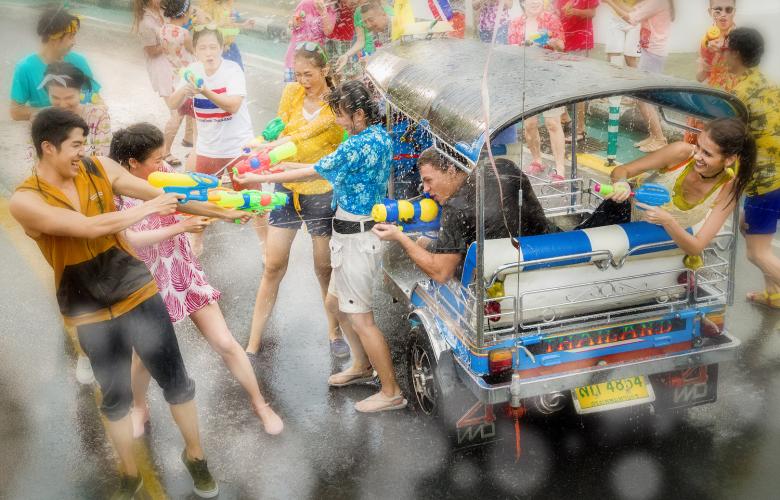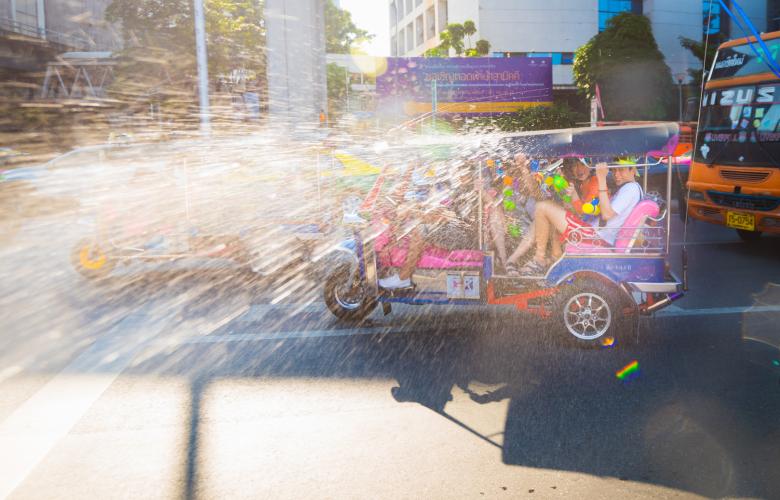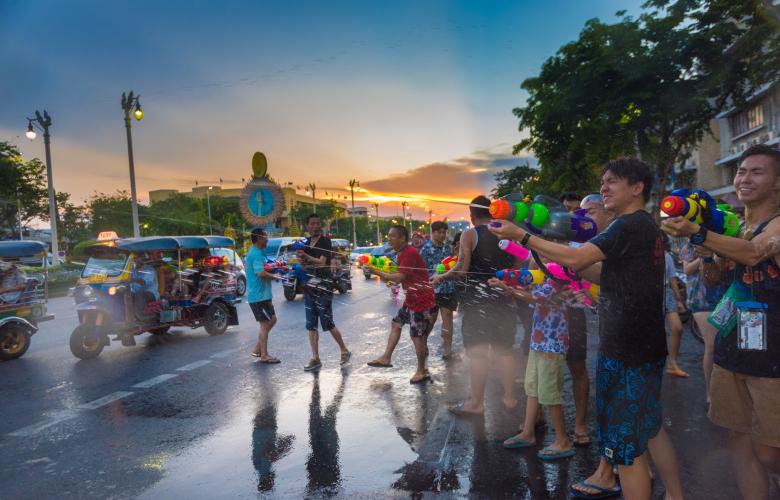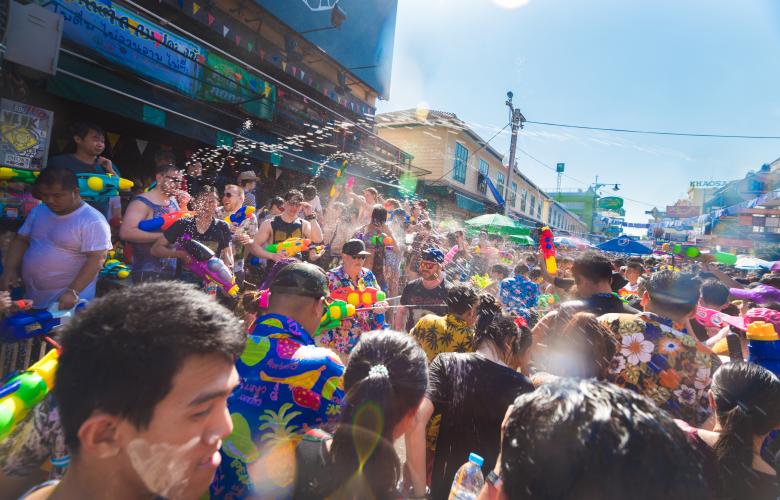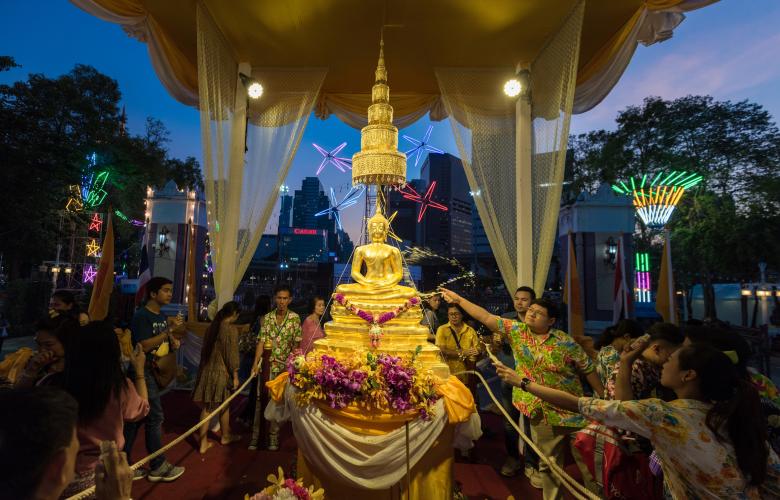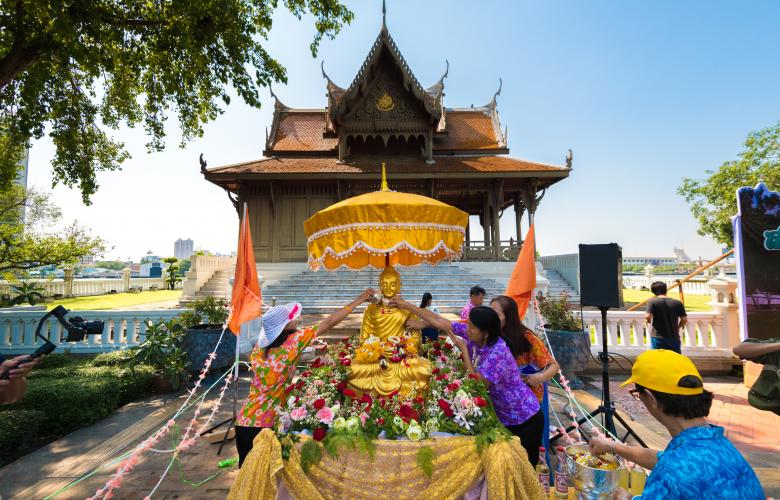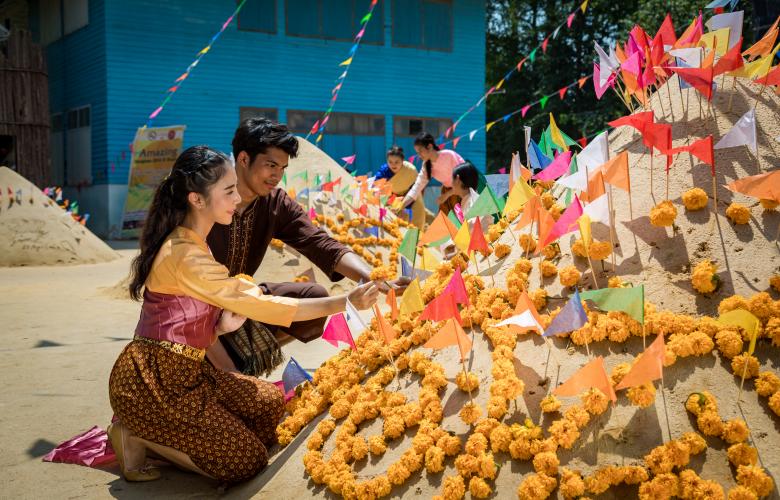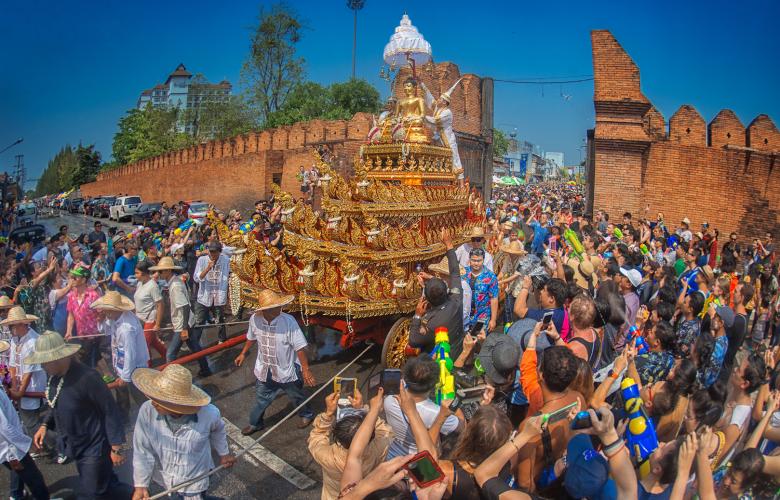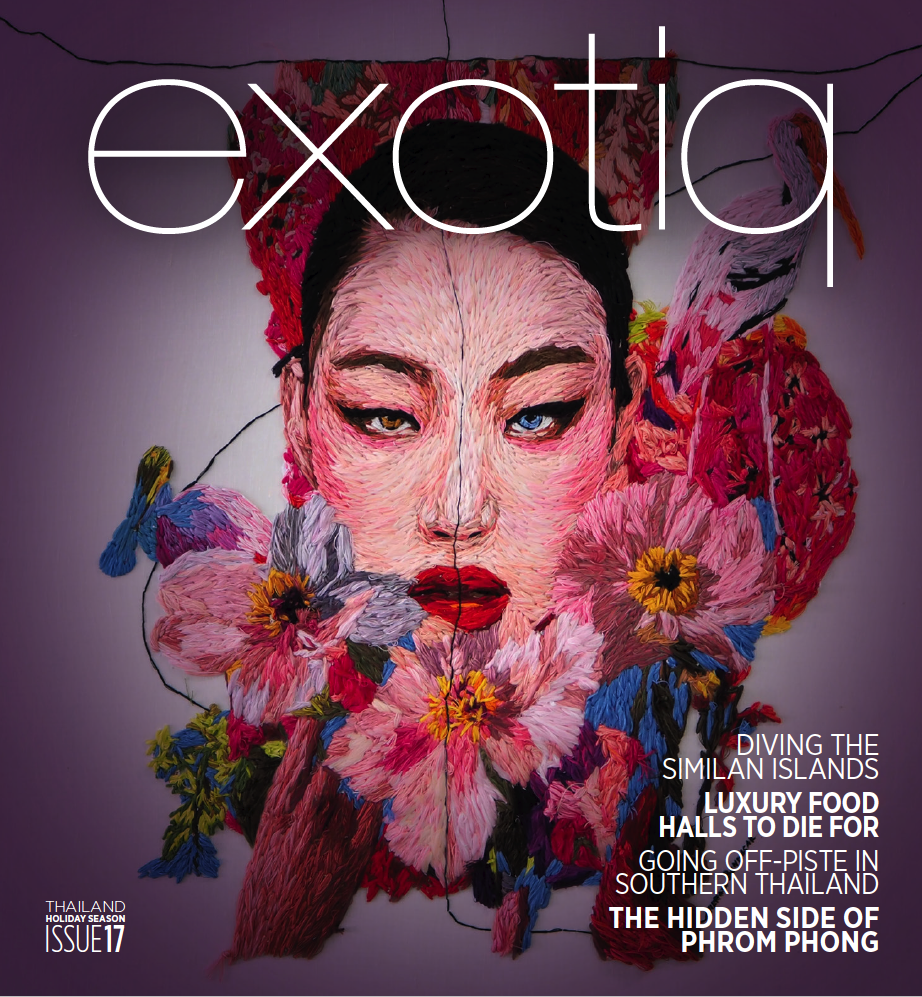- Bangkok
- Central Thailand
- Eastern Thailand
- Northeast Thailand
- Northern Thailand
- Southern Thailand
- Southern Thailand - Chumphon
- Southern Thailand - Krabi
- Southern Thailand - Phang Nga
- Southern Thailand - Phuket
- Central Island - Phuket
- Central West Coast - Phuket
- Bang Tao Beach - Phuket (Central West Coast)
- Emerald Bay - Phuket (Central West Coast)
- Kalim Beach - Phuket (Central West Coast)
- Kamala Beach - Phuket (Central West Coast)
- Laguna - Phuket (Central West Coast)
- Layan Beach - Phuket (Central West Coast)
- Patong Beach - Phuket (Central West Coast)
- Surin Beach - Phuket (Central West Coast)
- East Coast - Phuket
- North West Coast - Phuket
- Small Islands - Phuket
- South West Coast - Phuket
- Southern Coast - Phuket
- Southern Thailand - Satun
- Southern Thailand - Songkhla
- Southern Thailand - Surat Thani
Contact
Jan 26, 2019
Splashes of water and squeals of laughter ring through the air as people in bright tropical shirts take to the streets trying to beat the heat. This isn’t spring break or a water park...it’s Songkran.
Often known abroad as the Thai ‘water festival’, Songkran is a time of joy and carefree celebration marked by splashes of water, gleeful faces, colourful attire and lively parades. Although this Lunar New Year is celebrated throughout Southeast Asia, international travellers tend to flock to Thailand for unrivalled, water-filled festivities as Songkran is one of the country’s most important holidays.
Songkran through the Centuries
Although no one knows how long ago people first celebrated Songkran, it is believed to stem from Hinduism and the ancient Indian festival known as Makara Sankranti, which celebrates the astrological passage of the sun as it moves into a new zodiac. Songkran, which can be roughly translated as “moving,” “transiting” or “approaching,” is an adaption of this Hindu festival and celebrates the coming of the new year based on the lunar calendar in mid-April.
History also shows that local people visited Buddhist temples, known as wats, to receive blessing and prayers from the residing monks. During their visit, they gave food and gifts to the monks as well as showed respect by pouring fragrant water over them or Buddha statues in a cleansing ritual. This water was then collected, taken back to the village, and used to bless elders and respected people of the community.
Thai Traditions
Over the years, Songkran became a time where families take off work and come together to spend time with each other. People pay respect to their elders, make merit at their local temples and clean their homes.
Water is an essential aspect of Songkran because it is spiritually purifying. It symbolically washes away old sins and grievances, allowing the New Year to begin with happiness and prosperity.
Family members, particularly the younger generations, drizzle jasmine-scented water over the hands and shoulders of village elders and older family members using small intricately carved silver bowls. Traditionally, people also dipped their fingertips in the water and softly flicked droplets on others as a gentle, respectable way to offer a blessing of fortune and happiness...and the seed of today’s city-wide water fights.
Another significant aspect of this religious holiday is visiting a Buddhist temple and making merit. This often includes elaborate ceremonies with a ritualist bathing of a Buddha statue and subsequent processions. Local people also give offerings of food, gifts and money to the monks along with bringing a small amount of sand to the temple. This is to replace the grains of sand that have been gradually carried away on worshippers’ shoes as they depart the temple grounds. The sand is then constructed into pyramid-like chedis or pagodas decorated with colourful flags, streamers and monetary donations.
You’ll also notice Thai’s smearing an off-white paste or chalk-like substance on their faces. This natural powder, known as din sor pong, is combined with a little water and then painted on faces to ward off evil spirits and protect the wearer.
Lastly, it is also very common that people thoroughly clean their house and rid their homes of dust and any unwanted or unused items. This mirrors the ritual of cleansing oneself with water on Songkran.
Contemporary Celebrations
As with many religious or cultural holidays, the spiritually-based celebrations have gradually shifted to those of merriment. Songkran is no exception and there has been a notable change in how people celebrate the holiday even within the last decade.
Although locals continue to make merit at temples and tidy up their houses as part of their New Year’s traditions, Songkran has gone mainstream and includes people of all different nationalities in the festivities. It has transformed into a fun, friendly and chaotic celebration featuring high-powered water guns, icy buckets of water and hoses spraying more water in every direction. You’ll see young children flinging water with small plastic buckets or spraying passersby with small water guns, teenagers carrying super soakers to spray motorcyclists and cars as they drive by, and even adults sneaking up behind another to pour water down their back or pretending to get “shot”.
In some of the major tourist hubs such as Bangkok and Phuket, hotels and bars host competitions for the world's wettest party. There are also parties where patrons get lost in mountains of white foam and enjoy spectacular light and sound shows.
In beach towns, the tradition of taking sand back to the temple to create sand pagodas has transformed into elaborate competitions. Artists from all over come to create stunning sand sculptures, which are torn down a day later to remind us all that beauty is fleeting.
When and Where to Celebrate Songkran
Songkran is a three-day religious festival from 13 to 15 April every year. However, the celebrations may begin a day early or extend a few days longer depending on the city.
The rowdiest parties are on Khao San Road in Bangkok, Bangla Road in Phuket and Beach Road in Pattaya. The excitement of Songkran combined with these streets’ infamous nightlife makes them an unforgettable experience of Songkran.
Family-friendly, alcohol-free “fun zones” and traditional parades can be found near Wat Pho in Bangkok. If you’re in Phuket, visit Saphan Hin Park in Phuket Old Town and Soi Ta-iad in Chalong for more kid-friendly festivities.
Baeng Saen Beach in Chonburi province is famous for its Wan Lai Festival. In addition to water fights, this area is renowned for its sand pagoda competition. There is also entertainment by dancers, musicians, and greased pole boxing competitions called muay talay.
The wettest parties, however, are in Chiang Mai City. Surrounded by an ancient moat, there’s an endless supply of water and celebrations that can last up to a week including cultural performances and a parade!
Dos and Don’ts for Celebrating Songkran
Do protect your electronics by investing in waterproof cases or bags – if you go out, you will get wet!
Do use public transportation or book accommodations within walking distance of main events
Do respect elders by gently sprinkling water on them rather than spraying them
Don’t wear revealing clothing or walk around shirtless or in bikinis
Don’t forget to wear sunblock, sunglasses and drink plenty of bottled water
Don’t spray water purposefully in people’s mouths, eyes or ears
Important Information:

